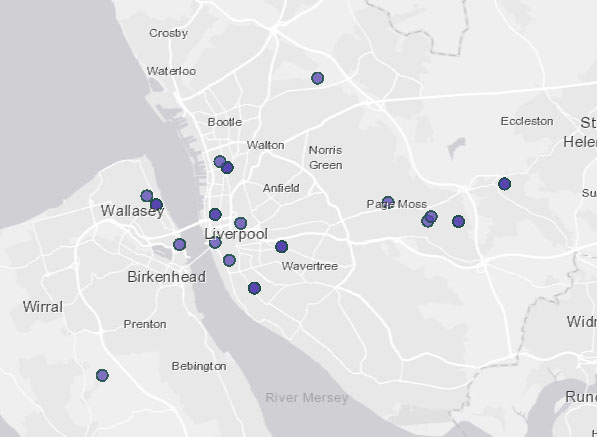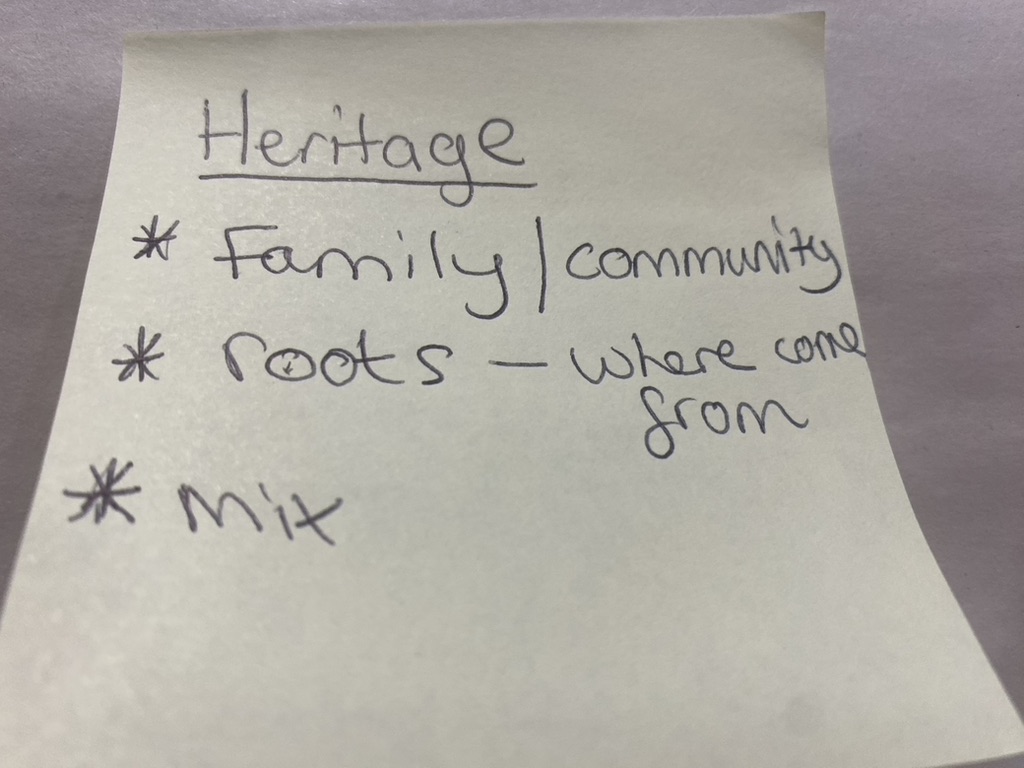Research Update

The CherPP project team are currently applying the analysis of our qualitative data collection to the quantitative stage of our work. In this blog, CherPP researcher Dr Laura Taggart provides an update on how one method is informing the next.
The Community Workshops: An Overview
A significant part of the project so far has involved designing, organising and facilitating community workshops across the Liverpool City Region. These workshops are now complete. Forty-one participants contributed to seven 90-minute workshops held in community spaces across Merseyside. With help from community engagement colleagues from our research partner, National Museums Liverpool, we reached out to a variety of community groups to share a call for volunteers to join a session. We asked that, where possible, groups would be made up of people who did not regularly use the museums on the waterfront.

Each session opened with an exercise asking participants to write down what cultural heritage means to them. We put these words and phrases on a board and talked about them individually, or in loose thematic clusters, depending on the size of the group. This activity and discussion drew out participant memories, family stories, and experiences and perceptions of place.
We then introduced the Waterfront Transformation Project and shared photographs which showed the docks at various points in history – from a busy port trading in goods and people, to the post-industrial decline and silted up dock of the 1970s and 80s, and onto the 1990s redevelopment and present day. We also showed images of the planned redevelopment work to the International Slavery Museum, Maritime Museum, and Canning Dock. Viewing these photographs allowed participants to visualise the space, and drew out responses and stories.
Early Findings
With the workshops complete and the audio recordings transcribed, the team used NVivo software to analyse the data. We initially undertook an inductive, data-led approach, reading the transcripts several times, creating open codes and grouping these codes into themes. We then developed a second codebook, informed by literature around cultural and heritage value, which showed broad alignment with the data-informed codes and themes. These codebooks will be combined and data re-coded to allow for a full narration of the rich and nuanced workshop data.
There are several interesting findings which contribute to knowledge about cultural value and particularly non-use. Significantly, there is variance in how people define use: some participants who have not directly visited the museums for over a decade still perceived themselves as users, and recalled various meaningful experiences when visiting the museum. Others who may visit with some regularity, to take their children or to use the café, may not define themselves as users, as they do not personally identify as “museum people”.
We were privileged to hear personal memories and family histories, and how the built and natural environment of Liverpool and the surrounding areas interacted with these stories. The iconic buildings on the waterfront, the docks, and the River Mersey itself all held symbolic importance for many of our contributors, representing working class histories, global migration, and legacies of the Transatlantic Slave Trade. The waterfront was variously and sometimes simultaneously viewed by participants as a site for play and leisure, commemoration and reflection, and tourism and economic development. The workshop format also allowed contributors to express negative emotions. For example, some spaces evoked distressing and often viscerally-experienced emotional responses. Participants also spoke about gentrification, with spaces to play and interact as a community replaced by commercial ventures or private space that is perceived as “not for us”.
Next Steps
Using the codes and themes from the inductive data analysis process, we have developed a set of indicators and attributes related to the value of cultural heritage. Along with a novel typology of non-use, the indicators will feed into the design of an experimental survey drawing out preferences and attitudes to cultural heritage, including a willingness-to-pay question, that will be distributed to a representative sample across the Liverpool City Region. The survey will test whether designing questions which incorporate the nuance and complexity of personal responses to cultural heritage elicits different results to more traditional contingent valuation models.
Many thanks to the groups and organisations who gave us space to host the workshops, and all the participants for their valuable contributions.